For the 2025 school year, there is 1 public middle school serving 556 students in Plymouth Joint School District. This district's average middle testing ranking is 7/10, which is in the top 50% of public middle schools in Wisconsin.
Public Middle School in Plymouth Joint School District have an average math proficiency score of 45% (versus the Wisconsin public middle school average of 34%), and reading proficiency score of 38% (versus the 36% statewide average).
Minority enrollment is 13% of the student body (majority Hispanic), which is less than the Wisconsin public middle school average of 39% (majority Hispanic and Black).
Overview
This School District
This State (WI)
# Schools
5 Schools
729 Schools
# Students
2,008 Students
248,238 Students
# Teachers
153 Teachers
17,959 Teachers
Student : Teacher Ratio
13:1
13:1
District Rank
Plymouth Joint School District, which is ranked within the top 50% of all 444 school districts in Wisconsin (based off of combined math and reading proficiency testing data) for the 2021-2022 school year.
The school district's graduation rate of 90-94% has decreased from 95% over five school years.
Overall District Rank
#177 out of 450 school districts
(Top 50%)
(Top 50%)
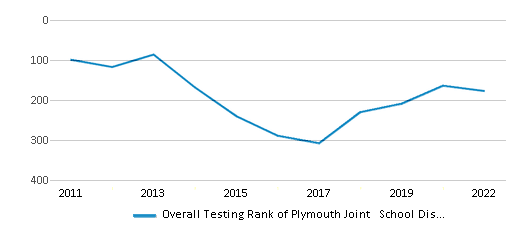
Math Test Scores (% Proficient)
46%
39%
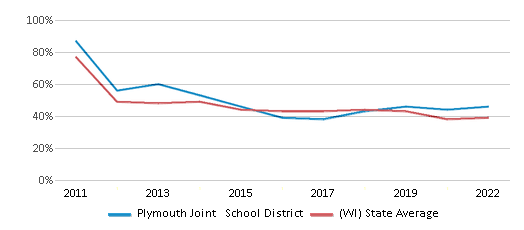
Reading/Language Arts Test Scores (% Proficient)
38%
38%
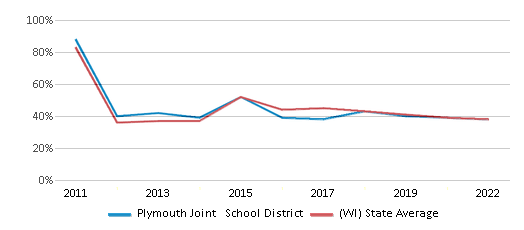
Science Test Scores (% Proficient)
51%
44%
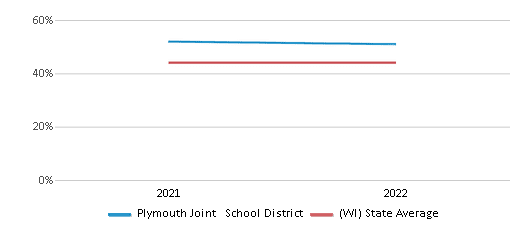
Graduation Rate
90-94%
90%
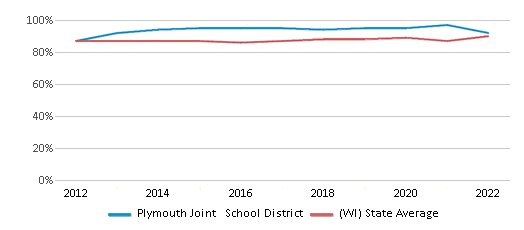
Students by Ethnicity:
Diversity Score
0.23
0.59
# American Indian Students
4 Students
3,614 Students
% American Indian Students
n/a
2%
# Asian Students
20 Students
11,285 Students
% Asian Students
1%
5%
# Hispanic Students
135 Students
37,753 Students
% Hispanic Students
7%
15%
# Black Students
17 Students
30,293 Students
% Black Students
1%
12%
# White Students
1,753 Students
152,522 Students
% White Students
87%
61%
# Hawaiian Students
1 Student
174 Students
% Hawaiian Students
n/a
n/a
# Two or more races Students
78 Students
12,537 Students
% of Two or more races Students
4%
5%
Students by Grade:
# Students in PK Grade:
106
6,117
# Students in K Grade:
114
6,551
# Students in 1st Grade:
122
6,827
# Students in 2nd Grade:
127
7,080
# Students in 3rd Grade:
122
7,007
# Students in 4th Grade:
128
8,146
# Students in 5th Grade:
137
14,725
# Students in 6th Grade:
135
48,528
# Students in 7th Grade:
143
57,406
# Students in 8th Grade:
141
59,497
# Students in 9th Grade:
182
7,426
# Students in 10th Grade:
177
5,915
# Students in 11th Grade:
184
6,276
# Students in 12th Grade:
190
6,737
# Ungraded Students:
-
-
District Revenue and Spending
The revenue/student of $16,798 in this school district is less than the state median of $17,039. The school district revenue/student has stayed relatively flat over four school years.
The school district's spending/student of $16,201 is less than the state median of $17,011. The school district spending/student has stayed relatively flat over four school years.
Total Revenue
$34 MM
$13,869 MM
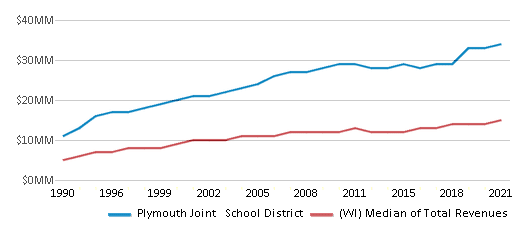
Spending
$33 MM
$13,846 MM
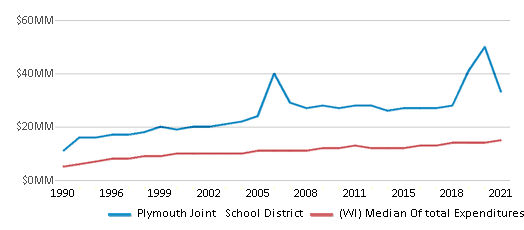
Revenue / Student
$16,798
$17,039
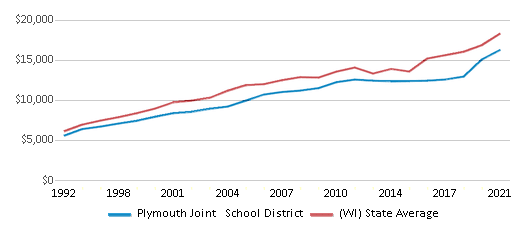
Spending / Student
$16,201
$17,011
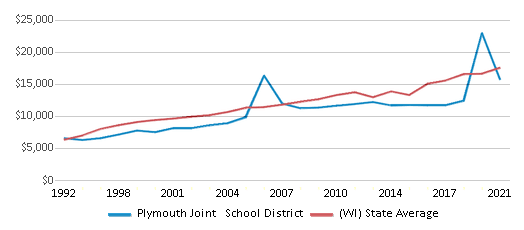
Best Plymouth Joint School District Public Middle Schools (2025)
School
(Math and Reading Proficiency)
(Math and Reading Proficiency)
Location
Grades
Students
Rank: #11.
Riverview Middle School
(Math: 45% | Reading: 38%)
Rank:
Rank:
6/
Top 50%10
300 Riverside Cir
Plymouth, WI 53073
(920) 892-4353
Plymouth, WI 53073
(920) 892-4353
Grades: 5-8
| 556 students
Recent Articles

Sexual Harassment at Age 6: The Tale of a First Grade Suspension
A six-year old in Aurora, Colorado, was suspended after singing an LMFAO song to a little girl in his class and reportedly “shaking his booty.” We look at the case and the sexual harassment problem in public schools today.

How Scaffolding Could Change the Way Your Child Learns
This article explores the concept of instructional scaffolding, a teaching method that enhances learning by breaking down complex tasks into manageable parts. It highlights how scaffolding supports students in developing critical thinking skills and becoming more independent learners. The article discusses the benefits of scaffolding, including improved engagement and reduced anxiety, and provides strategies for its implementation across various educational levels.

February 05, 2025
Understanding the U.S. Department of Education: Structure, Impact, and EvolutionWe explore how the Department of Education shapes American education, from its cabinet-level leadership to its impact on millions of students, written for general audiences seeking clarity on this vital institution.





